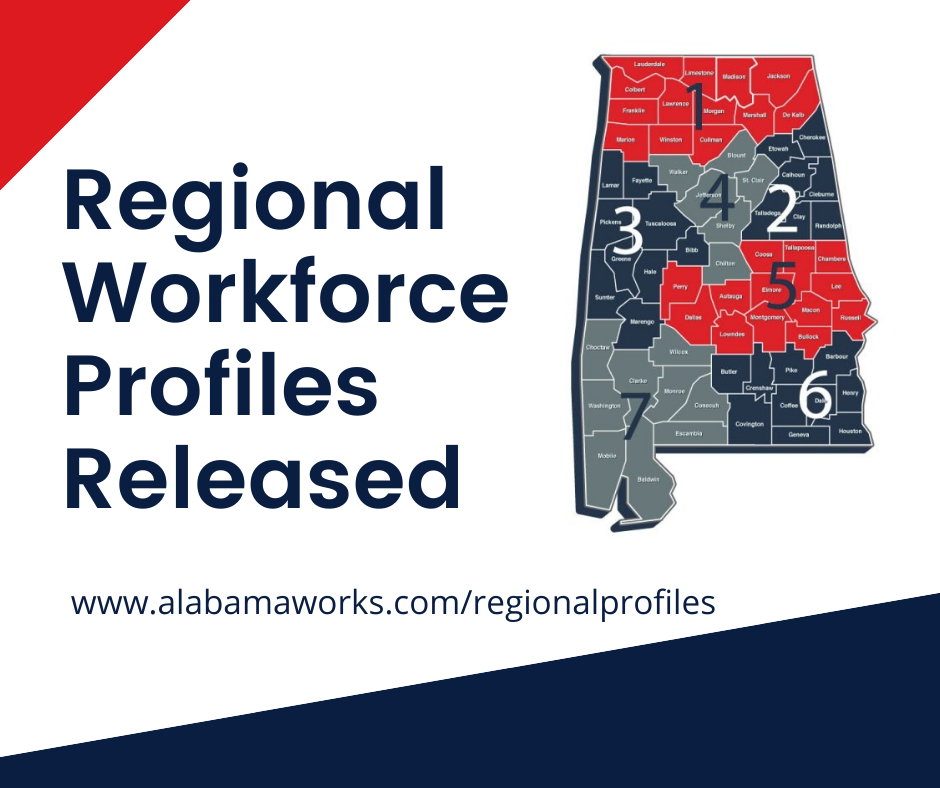Regional Workforce Profiles Released to help Alabama increase labor jobs
Published 10:11 am Thursday, January 14, 2021
|
Getting your Trinity Audio player ready...
|
Regional workforce profiles were released this week with the purpose of increasing the state’s labor force.
Through an Equity Leadership Acceleration Grant from the Lumina Foundation, the Alabama Commission on Higher Education and Equivolve Consulting, in partnership with the Alabama Workforce Council and the Governor’s Office of Education and Workforce Transformation, collaborated to produce a tool with key data points for each of the seven regions.
The data will provide a foundation for collaboration, shared resources and enhanced communication among stakeholders in order to achieve the state’s attainment goal.
Gov. Kay Ivey recently set a goal of adding 500,000 credentialed Alabama workers to the state’s labor force.
“Growing Alabama’s workforce is essential for our state’s prosperity, and it is why I set the goal of adding 500,000 more skilled Alabamians to the labor force”, Ivey said. “I am proud of the great work going on throughout the state, and these Regional Workforce Profiles will help broaden our efforts. I offer my sincerest thanks to the Lumina Foundation for selecting Alabama for this opportunity.”
Equilove CEO Glenn Love said the data is crucial to helping Ivey reach her goal.
“Developing these profiles is a critical step toward adding 500,000 credentialed Alabamians to the labor force”, Love said. “Not only do the profiles offer a window into the state’s workforce, they provide the Ivey administration with an opportunity to develop strategies that are data-driven, responsive, and equitable.”
Jim Purcell, executive director, Alabama Commission on Higher Education, said it’s important to create opportunities and empower students for the work force.
“Postsecondary learning has never mattered more than it does right now to our state,” Purcell said. “The workforce profiles will serve as valuable guides for developing new certificates and degrees to meet the needs of employers and provide pathways for Alabamians into those middle- and high-skill jobs that employers are looking to fill.”
Each regional profile contains background information, an education snapshot, a workforce snapshot, employment access and regional key findings. They can be viewed and downloaded at www.alabamaworks.com/regionalprofiles.
“As we continue building out our skills-based hiring programs and initiatives, these regional profiles will enable us to further understand the complexities of each region and more effectively reach our target audience,” said Alabama Workforce Council Chairman Tim McCartney said. “This important data will help business and industry, together with the state, break down barriers and promote the credential and competency-based career pathways model.”





